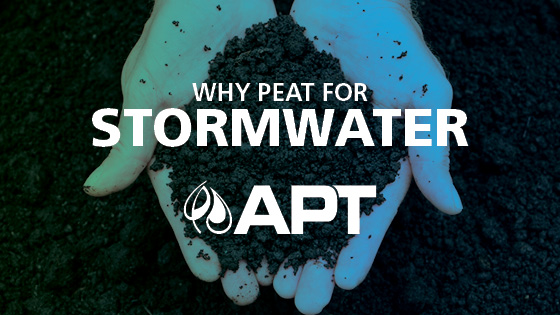
Using peat in environmental remediation is a natural fit. Peat’s intrinsic qualities make it an efficient, convenient and environmentally sound method of environmental remediation.
Reed-sedge peat is primed to attract and bond dissolved a range of heavy metals including lead, cadmium, copper and zinc. Peat forms strong natural bonds with these metals through a process called adsorption, making it very effective in industrial and stormwater treatment.
Getting peat into the optimal form for water remediation takes some processing. Raw peat is quite impervious to flow and requires large amounts of sand to improve hydraulic connectivity. Dried peat is dusty and inconsistent, but when processed into a granular form, transforms into a powerful medium for natural water treatment.
Case(s) in Point
What do mines, foundries and commercial buildings have in common? Each is held to strict water quality standards, often requiring treatment or remediation before water can be discharged. Granular reed-sedge peat has been used successfully in both passive and active water treatment systems in industrial applications across the U.S. Here are a few examples that demonstrate peat’s capacity.
- Mine Water Management, Naturally
The mining industry is often painted as anti-environment, but that is an unfair characterization. In the United States, mine water must be treated to remove contaminants, including trace metals, before it can be discharged into the environment. While conventional treatment is labor intensive and expensive, peat-based sorption materials have proven to be a less expensive and easy-to-deploy treatment alternative.
An iron mine in Minnesota used granular peat in a semi-active treatment system and recorded an average removal of 75% for suspended copper, and 60% for dissolved copper while reducing the size, complexity and operating cost of the treatment system. At a base metal mine, lead removal was greater than 99% and operating costs were well within budget. Those are both solid wins for peat.
- Simple, Effective Treatment Solutions
A Washington-based foundry needed to reduce copper in its stormwater to comply with its stormwater permit. A traditional active treatment system came with a price tag of $60-100K, which was more than the small foundry could afford to implement, operate or maintain. They needed a less expensive and lower maintenance passive treatment system, and they found it in granular peat sorption media.
Since all the foundry’s stormwater flowed into a single drain system, a flowthrough treatment system using simple peat-filled filter socks was placed in the drain line. The peat did the trick, dropping copper concentrations below the benchmark value and keeping the foundry in compliance ever since. A simple solution and a big win for peat.
- Rethinking Roof Runoff
An industrial facility in the Pacific Northwest was out of compliance with its stormwater permit and needed a solution that would complement its existing end-of-pipe treatment system. After isolating the roof area that contributed most heavily to the entire site’s total zinc loading, facility managers opted to install upflow downspout filters (UDF) filled with a bed of granular peat media.
The UDFs treated runoff water every time it rained, effectively dropping zinc the concentrations that were entering the end-of-pipe treatment system by 50% and bringing the facility back into compliance.
Out With the Old, In with the Natural
It is critical that we protect our water supply so that it can be recycled indefinitely. Clean water is a precious commodity. We must develop new solutions to age-old challenges, using existing resources to resolve complex environmental issues. Industry keeps returning to peat because it helps remediate wastewater naturally.
Treating environmental contamination with non-toxic, natural peat is a prime example of a “best use” for our ubiquitous peat resources. When used judiciously and harvested in a responsible manner, the world’s peat supply can provide benefits for centuries to come.
